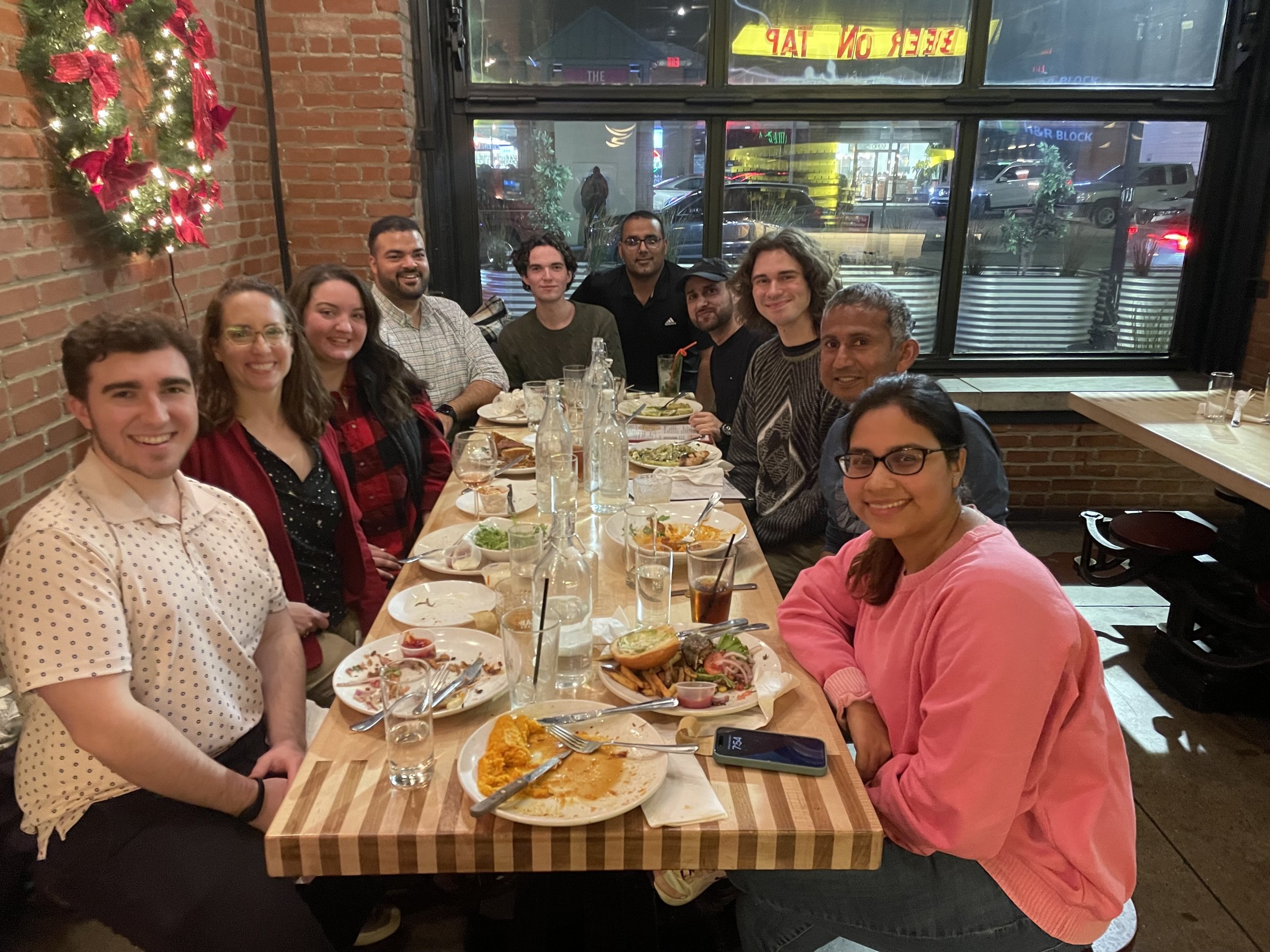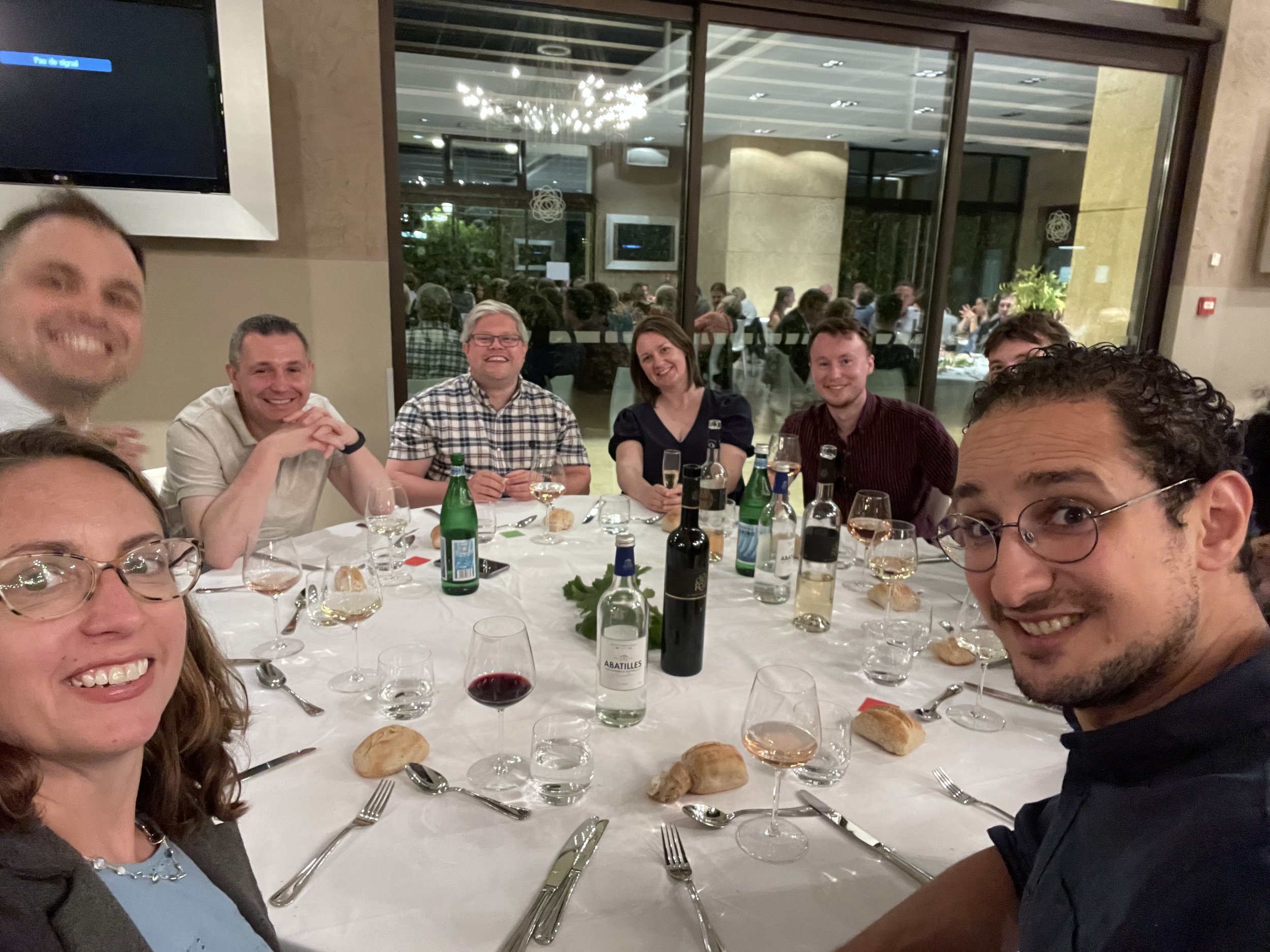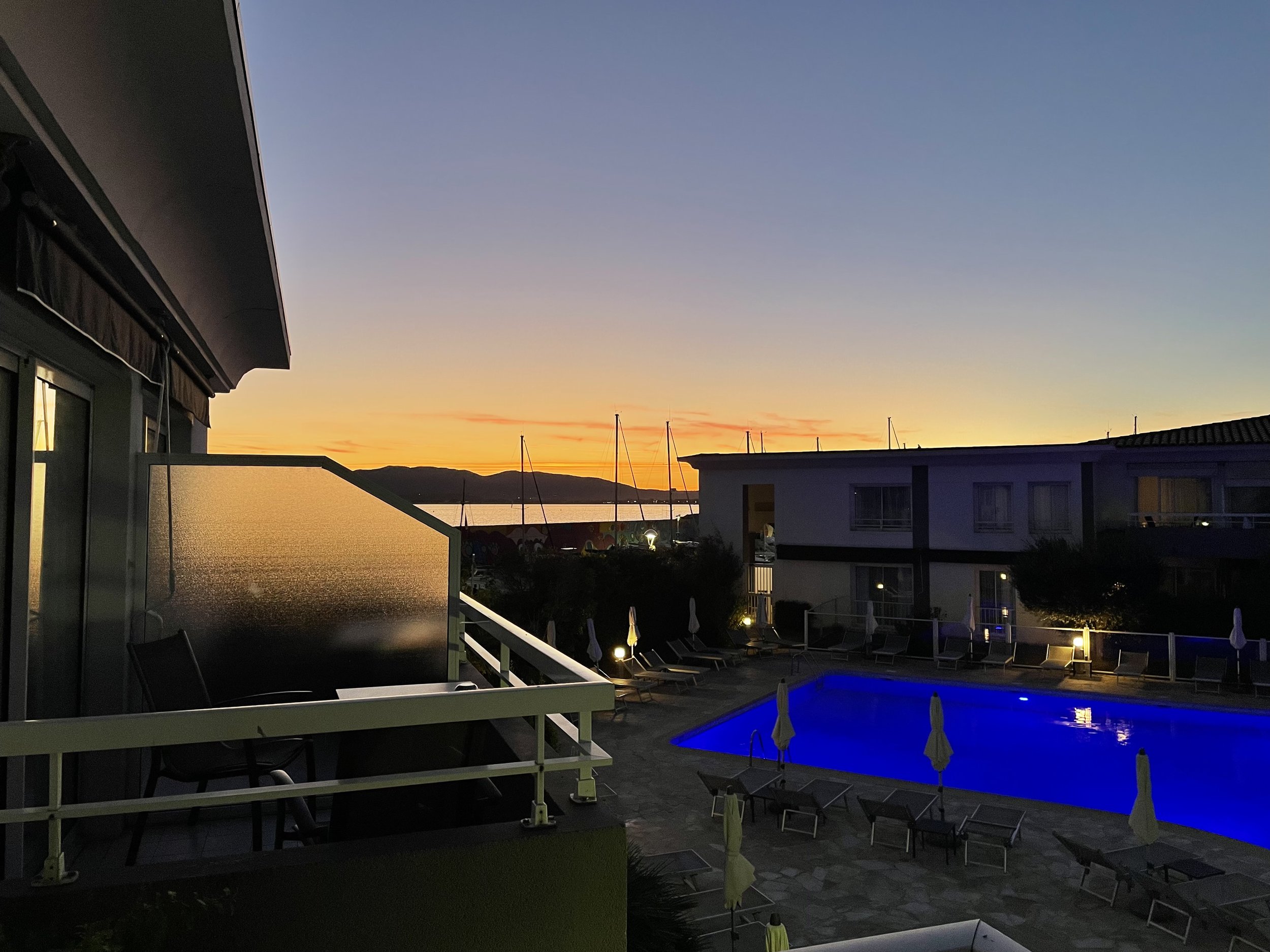Once of the things that Cindy and I organized this past year is a monthly working group of labs working in the area of pathogens and the placenta. We brought in folks from OB/GYN, Pediatrics, CVR, Biological Sciences, Medicine…all over the University and a range from the basic to clinical sciences. There is a small community doing this type of work here at Pitt, but the COVID pandemic resulted in each group working in isolation. So we thought we’d fix that. The first year has been a success. Last Friday, we had an in-person end-of-year get-together. We have plans for growing the program in 2024! Stay tuned!
WashU collaborator visit
Fantastic visit by the Amarasinghe/Leung labs from WashU this past week! Super fun talking science with Gaya and the crew and exploring the city of Pittsburgh! Safder gave a CVR Seminar and we ended the visit with a tour of the Nationality Rooms at the Cathedral of Learning.





Welcome Gia!!!
We welcome a new undergraduate student to the lab this semester! Gia Romano is a sophomore in the Bachelor’s in Public Health (BSPH) program. This is a new undergraduate degree program for the school. We are excited to welcome Gia to our lab! Gia is currently learning the basics of an academic research lab, including fun like breeding mice.
Gia describes herself:
New Jersey transplant. Usually found listening to music, watching hockey, or stress baking. Possibly all at the same time.
I hope we get the be the recipients of this stress baking!! :-)
NIAID Prototype Pathogen workshop
2 years ago, I was involved in the NIH Prototype Pathogen workshop, the goal of which was to lay out gaps in knowledge and research priorities for prototype viruses from viral families that NIAID wants to emphasize. Peter Myler (Seattle Children’s) and I chaired the Bunyavirales group. This means we needed to address 4 viral families (Peribunyaviridae, Nairoviridae, Hantaviridae, and Phenuiviridae). This is a difficult task due to the diversity of the Bunyavirales. For those of you that are taxonomically astute, note that I did not list the arenaviridae because they were considered by another group. :-)
We assembled a group of subject matter experts across these families to brainstorm appropriate pathogens and areas of need. We wrote this summary article that was finally published in JID.
Hartman, A.L. and Peter J. Myler. Bunyavirales: Scientific Gaps and Prototype Pathogens for a Large and Diverse Group of Zoonotic Viruses. 2023. The Journal of Infectious Diseases, Volume 228, Issue Supplement 6, 15 October 2023, Pages S376–S389, https://doi.org/10.1093/infdis/jiac338. PMID: 37849397.
There is an entire JID supplement that covers the NIAID Prototype Pathogen approach and has all of the summary articles from the working group. NIAID also wrote about it on their website. Check it out!
Bsky
I can be found on the Blue app in addition to twitter @roguerifter.bsky.social
Saint Raphael
Had a fantastic time this week at the 10th European Meeting on Viral Zoonoses in Saint Raphael, France. I gave the Richard Elliott Memorial Lecture (eeeek!!) in which I got to show off all the cool work our folks have been doing. I’ve never been to this conference before and Paul and I were two of only 4 Americans at the conference made up of mostly European scientists. It was great to connect with colleagues overseas, especially those from CVR Glasgow! Especially nice to meet new trainees from all over Europe. Here are some photos:
CVR Trainee Day 2023
CVR wanted to start an annual Trainee Day so that our trainees (students, post-docs, techs) would have an opportunity to present their work. And added benefit is that we get to see what everyone is working on. Kaleigh, Zach, and Austin all gave talks about their work. This was Zach’s first talk ever, and Austin’s first talk here at Pitt. Very proud of all of them!!
Two openings
UPDATE: We have 2 MS students rotating and a new undergrad student with us now. Will be introduced shortly!
We have two openings for this fall. We are looking for an incoming MS student to work on our bunyavirus neuropathogenesis projects.
We are also looking for a Pitt undergraduate to help us across several projects. See description below:
She’s been notified!!
We are thrilled to announce:
Cindy received the Notice of Award (NOA) this week for a K01 grant from NIAID!
This is a 5-year award to develop her own research program on vertical transmission of emerging bunyaviruses! We are so excited for her and can’t wait to see where the science goes with this!
Prevention of Rift valley fever maternal and fetal infection using a single monoclonal antibody
We have a new study out today in @NatureComms that is a collaborative effort between Cindy McMillen in my lab and Nate Chapman in Jim Crowe’s lab at Vanderbilt.
The Crowe Lab published a study in 2021 that isolated human monoclonal antibodies from humans that were either vaccinated or naturally infected with Rift Valley fever virus. One of the most potent neutralizers was RVFV-268 (IC50<1 ng/ml).
We tested the ability of RVFV-268 to protect pregnant rats from RVFV infection and in utero transmission. Cindy developed rat placenta slice cultures and showed that RVFV-268 can prevent infection of placental tissue ex vivo.
She then injected RVFV-268 into rats and showed that it rapidly crossed the placenta and can be found in the fetal tissues within 6 hours.
When pregnant rats were given RVFV-268 2 hours BEFORE RVFV infection, or +6 and +24 hours AFTER infection, both dams and fetuses were protected, with only a small amount of breakthrough viral RNA in the +24h group.
Thus, delivery of mAb RVFV-268 as late as 24 h after inoculation with RVFV can remarkably reduce both maternal and fetal infection.
Our conclusions:
• RVFV-268 rapidly reaches placental and fetal tissue after injection
• It prevents maternal and fetal infection in a dose-dependent manner.
• It also prevents vertical transmission when given up to 24 h after RVFV challenge.
This single highly potent neutralizing mAb RVFV-268 is potentially useful for either prophylaxis and/or therapy during pregnancy based on our rat model.
























